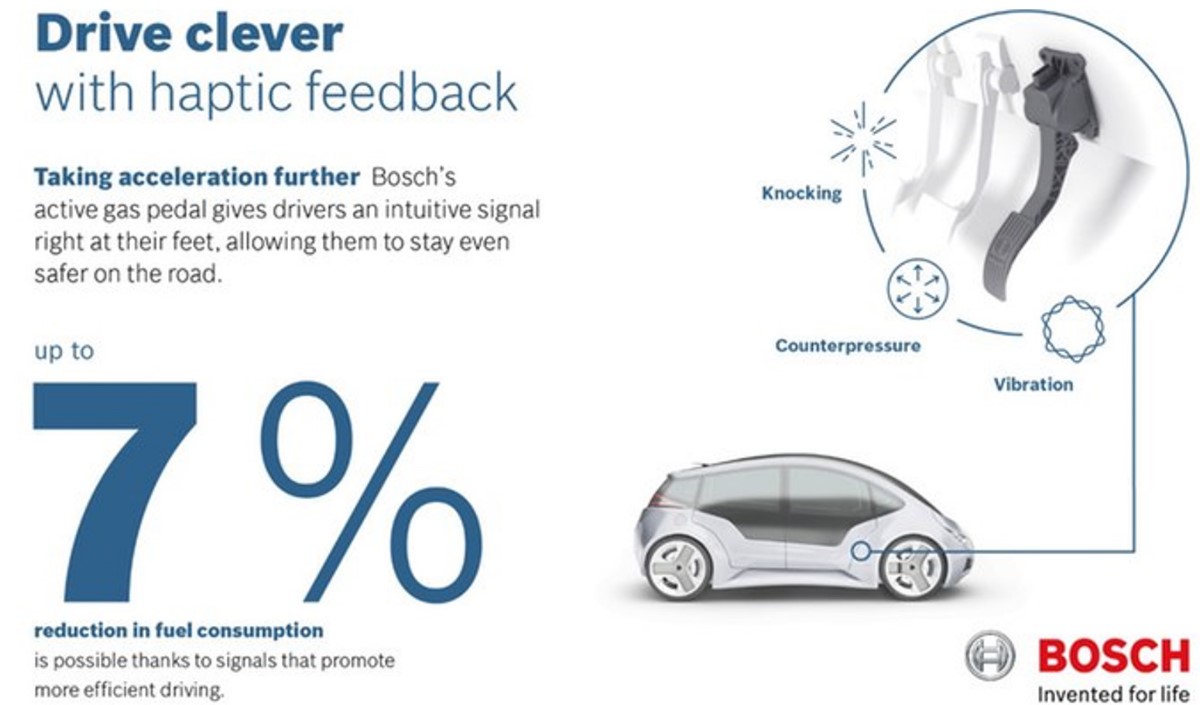Bosch claims 7% fuel savings with haptic feedback gas pedal
 |
| Bosch proposes combining exiting fuel-saving technologies with haptic feedback in the throttle pedal |
These days we've become accustomed to gadgets that give haptic feedback, usually as a vibration or reactive force. The technology has also crept into our cars in the form of seats or steering wheels that vibrate to warn when you're wandering out of your lane. Original equipment suppliers like Bosch and Continental have been working on an extension of this idea – haptic throttle pedals that give forced feedback or vibrate to indicate activity that is not conducive to good fuel economy. Now Bosch has attached a fuel-savings number to the technology.
Bosch proposes combining haptic feedback technology with electronic controls already in place in many fuel-conscious vehicles (such as the Toyota Prius or Mitsubishi i-MiEV) to improve fuel economy on a measurable scale.
Most economy-conscious vehicles already have controls that limit the amount of throttle response when in certain driving modes. These take some of the lead out of "lead foot" drivers without interfering with sudden throttle presses that may indicate emergency maneuvers.
Fuel-saving potential comes from start-stop coasting, wherein the engine is shut off while the vehicle is still moving, maintaining speed by "coasting" and automatically engaging the drivetrain and engine when needed. Bosch estimates that in this scenario, haptic feedback could be used to alert the driver to enter "coasting mode" to save fuel. In hybrids and plug-ins, the haptic pedal could be used to indicate to the driver when the combustion engine is about to engage, giving them the opportunity to lighten pressure on the pedal to maintain electric-only mode.
Bosch estimates that if some or all of these were implemented on a typical vehicle, drivers could see a reduction in fuel consumption of up to 7 percent.
On top of this, Bosch believes haptic feedback via the gas pedal could be used to indicate the best time to shift gear in a manual transmission. This would give a more intuitive, less distracting indicator to the driver than a dashboard display. It could also be used to indicate over-speed on marked roadways and even assist in emergency situations if the car is traveling too fast to make an upcoming curve safely. That latter idea could be integrated with GPS navigation and even information from the Internet to improve the warnings given.
Source: Bosch
